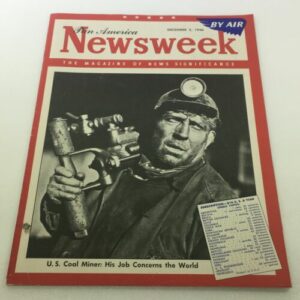
MARLBOROUGH – There is a typical-looking Marlborough street, Ellis Avenue, not far from Main Street, with no unusual landmarks, notable monuments or historical signage. But an internationally known scientist and inventor quietly lived there for years, within walking distance of the company that employed him.
Grant Wheat can be credited with saving thousands of miners’ lives through his diligent work developing battery-operated lamps for helmets.
The Marlborough resident’s dutiful widow ensured many of her husband’s patented inventions were safeguarded by donating them to the Smithsonian’s National Museum of American History in 1961. The illustrative collection is accompanied by a published history entitled “Story of Underground Lighting” which concludes with the Wheat Electric Rechargeable Cap Lamp.
In 1919 the newly established U.S. Bureau of Mines immediately approved the Wheat cap lamp.
Due to numerous fatal accidents in coal mines, scientists abroad, as well as in America, feverishly worked on headgear to make mining less hazardous. Among the scientists working on the problem were Thomas A. Edison, Sir Humphrey Davy, George Stephenson, William Clanny and Edward W. Bullard.
Koehler Manufacturing Company, which started in Marlborough, gave Grant Wheat his own laboratory to woo him. It expanded into the vacant S.H. Howe shoe factory.
In the 1800s, miners were not mandated to wear protective headwear. They wore hats made of soft cloth or canvas with a leather brim and lamp bracket. Likewise, doughboy-style military helmets were unsuitable, due to weight and cost.

When open flame candles and carbide or oil-wick lamps were used in the mines, and prevalent mine gases such as methane easily explodes. Oxygen deprivation, haulage accidents, falls and low light were all too common in the workplace in the late 1800s and early 1900s.
A black and white photograph of a coal miner wearing a cap lamp made the cover of Newsweek magazine, in the December 2, 1946, American issue. Today, Koehler Manufacturing flourishes, still using the Wheat trade name on underground lighting equipment it makes now in Wilkes-Barre, Penn.
The Grant Wheat name is not on a plaque attached to his former home, but it is nearby on his gravestone in Maplewood Cemetery on Pleasant Street.
It is appropriately graced with delicate stalks of wheat, symbolizing a long, prosperous, well-lived life and inscribed: “Let your light shine before men in such a way that they may see your good works…”
RELATED CONTENT
Union Common in Marlborough is a venerable community gathering place











